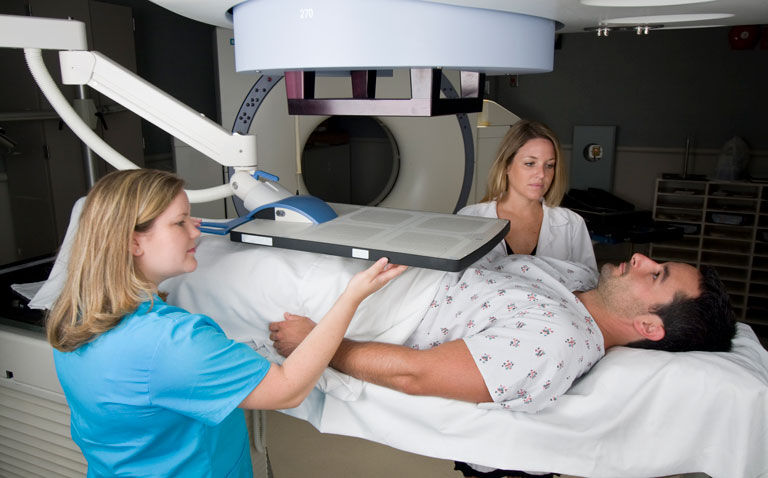MRI guided stereotactic radiotherapy is superior than that provided via CT guidance with respect to adverse effects for men with prostate cancer.
A randomised trial by Californian researchers has shown that magnetic resonance imaging (MRI)-guided stereotactic body radiation, significantly reduced grade 2 or higher acute physician-scored genitourinary and gastrointestinal toxic effects as well as patient self-reported prostate cancer symptom scores, compared to computed tomography (CT)-guided radiotherapy.
Stereotactic radiotherapy delivers treatment with high precision from a number of different angles around the body and is designed to reduce adverse effects on the tissue surrounding a tumour. Furthermore, results from several trials, indicate that this approach does not increase gastrointestinal or genitourinary acute toxicity.
While stereotactic radiotherapy has traditionally been delivered using linear accelerators and guided by computed tomography (CT) imaging, MRI-guided adaptive radiotherapy is seen as an emerging and alternative approach.
Moreover, it may also be possible using MRI to reduce the radiotherapy planning target volume (PTV) which encompasses the clinical target volume to account for possible uncertainties in beam alignment, patient positioning, organ motion, and organ deformation.
In the present study, the US researchers undertook a phase 3 study, with a view to demonstrating a reduced PTV with MRI compared to CT guidance, following stereotactic body radiotherapy for men with localised prostate cancer. Eligible men were randomised 1:1 to either MRI- or CT-guided stereotactic radiotherapy although neither the treating physician or patient were blinded to the treatment allocation.
The primary outcome was set as the incidence of acute (defined by occurring less than 90 days after stereotactic therapy) grade 2 or higher genitourinary (GU) toxic effects, whereas secondary outcomes included gastrointestinal toxic effects.
Other measures assessed included changes in the international prostate symptom score (IPSS) and for which increases of 15 points or more are considered to be clinically relevant.
MRI-guided stereotactic therapy and GU toxicity
A total of 156 men with a mean age of 71 years were randomised to the MRI arm (77) or the CT arm.
The proportion of GU toxic effects of grade 2 or higher was significantly lower among those receiving MRI-guided stereotactic therapy (24.4% vs 43.4%, p = 0.01). There were no reported gastrointestinal toxic effects at grade 2 or higher compared to 10.5% in the CT-guided group (p = 0.003).
The researchers also observed a significantly lower proportion of men with an IPSS score increase of 15 points or more after 4 weeks (6.8% vs 19.4%, p = 0.01).
The authors concluded that MRI-guided stereotactic radiotherapy reduced physician-reported toxic GU and gastrointestinal adverse effects than CT-guided stereotactic radiotherapy and called for future studies to examine the sustainability of these benefits.
Citation
Kishan AU et al. Magnetic Resonance Imaging-Guided vs Computed Tomography-Guided Stereotactic Body Radiotherapy for Prostate Cancer: The MIRAGE Randomized Clinical Trial. JAMA Oncol 2023










